AT THIS stage I have lost count of how many times I have crossed the Irish Sea.
Living in England, but with family located throughout Ireland, I have journeyed between the two islands on multiple occasions every year since I was but a baby myself.
Now, with children of my own, I continue to make those regular visits.
And it was on a recent trip to Northern Ireland, while enjoying the view from the coast on a splendidly sunny day, that I looked across the sea and was rewarded with a very clear view of the Isle of Man.
It struck me that I had yet to visit this little island which sat so invitingly there in the water seemingly equidistant from both of its far larger neighbours.
I wondered at the island life within, the beaches, the landscapes, the people.
There was so much to be found out and the excitement of a new place to explore prompted the quick booking of a family trip so we could get those answers.
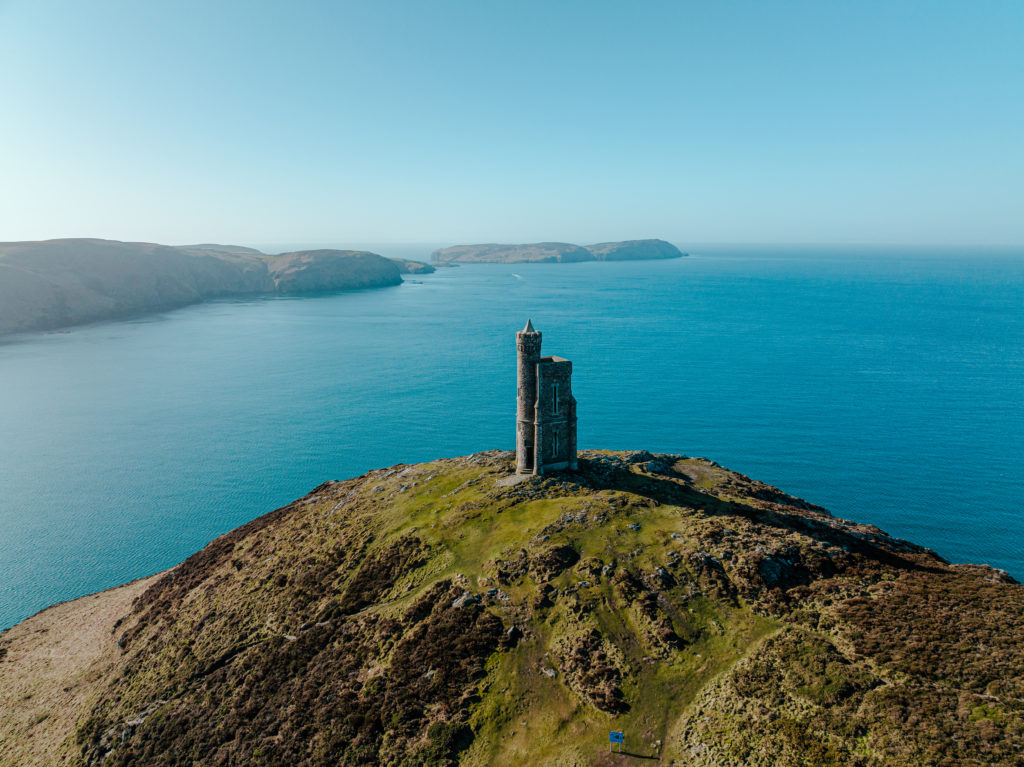 Adventure calls on the Isle of Man
Adventure calls on the Isle of ManSo close is the Isle of Man to both Ireland and England that you can get there in next to no time at all.
You can fly from either side in less than an hour or sail across in less than three.
What’s more, as the state is a British crown dependency you don’t even need to bring your passport.
You can travel freely to and from the island from both jurisdictions, as you remain within the Common Travel Area (however you will need some form of photo ID for your travel provider, of course).
And I can tell you, it is well worth the trip, as we found out during a short break on the island earlier this month.
We opted to travel via sea and booked the perfectly comfortable and well-equipped Manannan - a catamaran car ferry operated by the Isle of Man Steam Packet Company, which took us from Liverpool to the island’s capital Douglas in an impressive two and a half hours.
Once in Douglas, with the comfort of our own car for travel, we were ready to roll off the ferry and delve straight into the natural beauty that is evident at all points on this island.
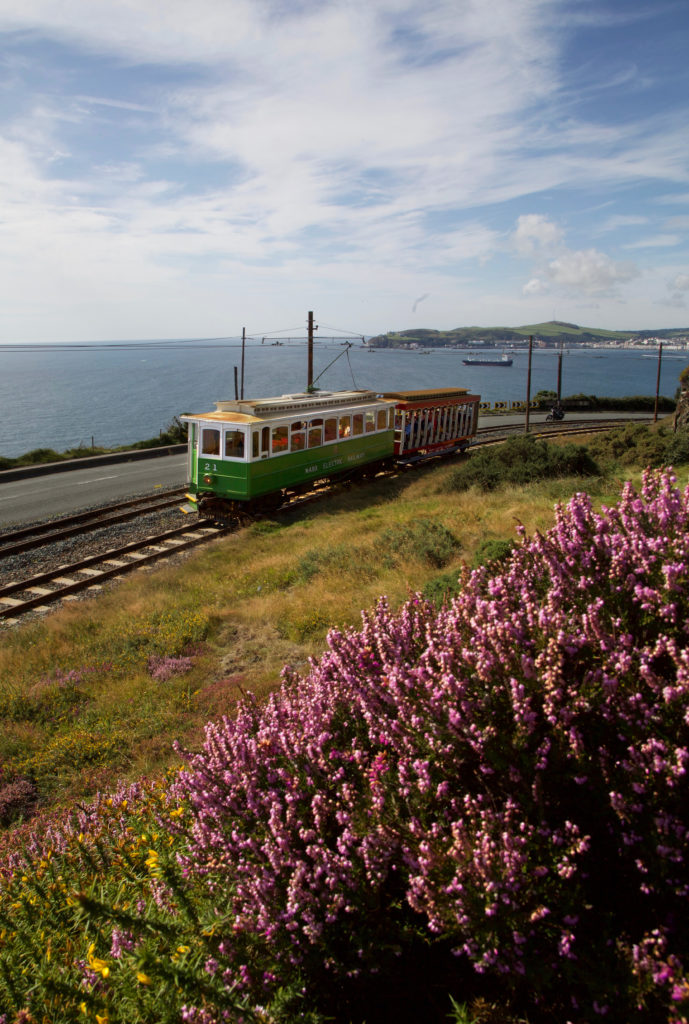 Take a ride on the Electric Railway in Douglas
Take a ride on the Electric Railway in DouglasThe Isle of Man is the only nation in the world which is designated in its entirety as a UNESCO Biosphere.
For context, there are 759 UNESCO Biospheres in 138 countries across the globe.
They vary greatly in terms of their population size, geography, ecosystems, socioeconomic situations and challenges, but they all have two things in common - a special environment and a population committed to keeping it that way.
There is certainly something special about the Isle of Man.
At only 13 miles wide and 33 miles long, you can drive across it in under an hour, but a far more scenic and enjoyable option is to take your time and stop at all the spots in between, as, while it may be small in size, it is simply bursting with things to do and see.
While only having a population of just over 84,000 people, the island has a rich 10,000-year history which they all take great pride in, as their UNESCO status will tell you.
For those among you who like a pub quiz, here is a fact worth soaking up - the island’s parliament, Tynwald, or more formally the High Court of Tynwald, was founded in the 10th century, making it the oldest continuous parliament in the world.
As well as impressive historic claims, the island boasts a vibrant cultural heritage too, with the Manx way of life and its traditions and folklore still evident and celebrated by its locals.
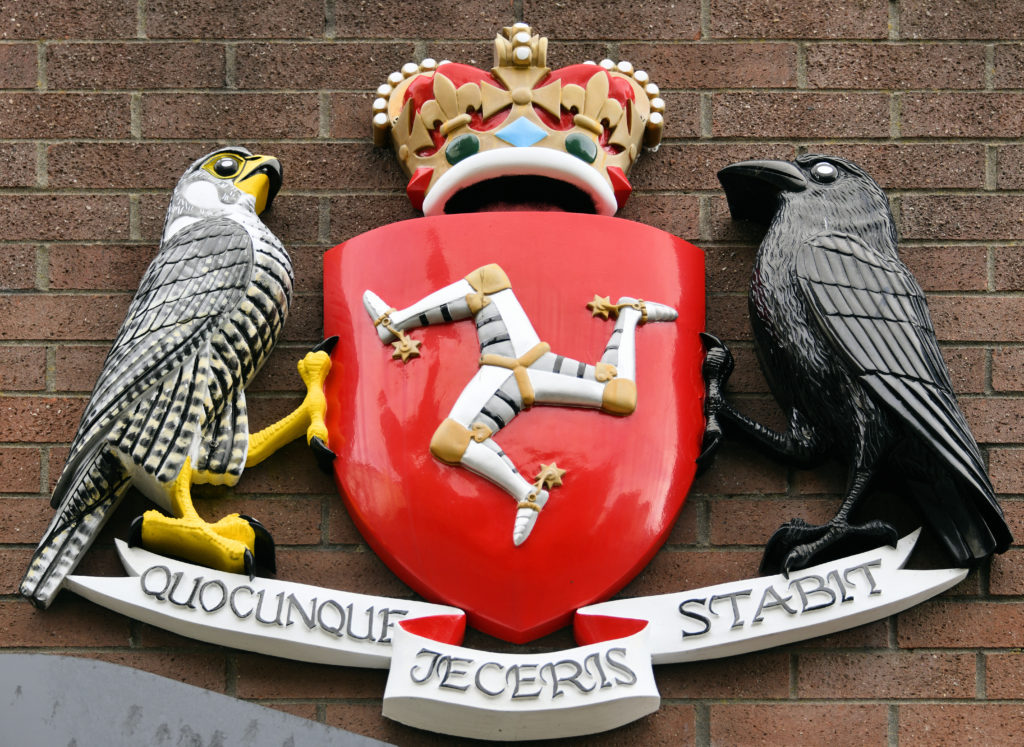 The Isle of Man's coat of arms features three silver armoured legs on a red shield
The Isle of Man's coat of arms features three silver armoured legs on a red shieldThe Manx culture is influenced by both its Celtic and Nordic origins and it has its own language too.
Manx Gaelic is closely related to both Irish and Scottish Gaelic, and while there were once fears that the island’s mother tongue was at risk of being lost, in recent years it has enjoyed something of a revival among the islanders.
We didn’t come across any Manx speakers during our visit, sadly, but we did get to view the written language as it features across many signs and place names dotted across the island.
Such injections of local culture were evident at every turn, in fact.
Manx icons and symbols, such as the curious three-legged sign of their national flag – which represents the three kings who held power there in the thirteenth century, appeared as frequently as the beautiful vistas which greet you whichever way you turn.
There is an abundance of beaches ready and waiting to welcome you too.
Whatever side of the island you find yourself on, you will find a beach, a bay or a harbour nearby from which to indulge your holiday desires.
Whether you want to paddleboard, eat fresh fish at a local restaurant, or play volleyball before indulging in some ice cream, everything you could want from a coastal holiday is there and more.
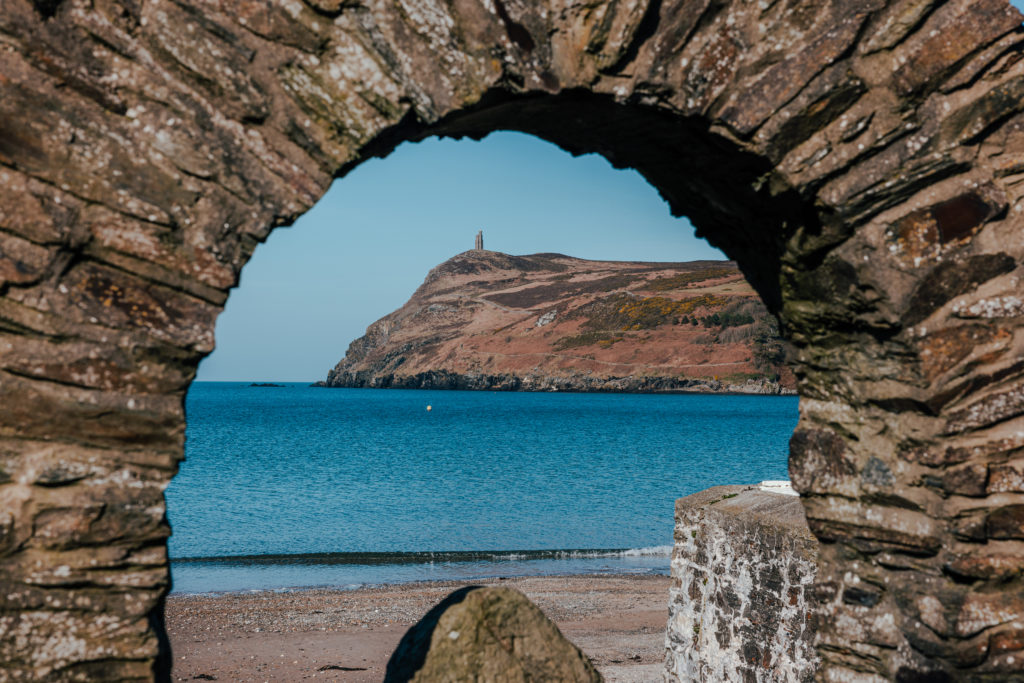 Enjoy the view and a stunning beach at Port Erin
Enjoy the view and a stunning beach at Port ErinAnd there are railways and trams too. Plenty of them.
The island’s heritage railway network, which boasts trains operated by steam, electricity and horse power, is charming, unique and lots of fun to explore.
Some of the lines have been in operation since the late 1800s and still work – which makes them even more fascinating to ride.
Whether you fancy a trip up a mountain, through a glen or to a mine, there is a railway for you.
We tried as many as we could fit into our short break.
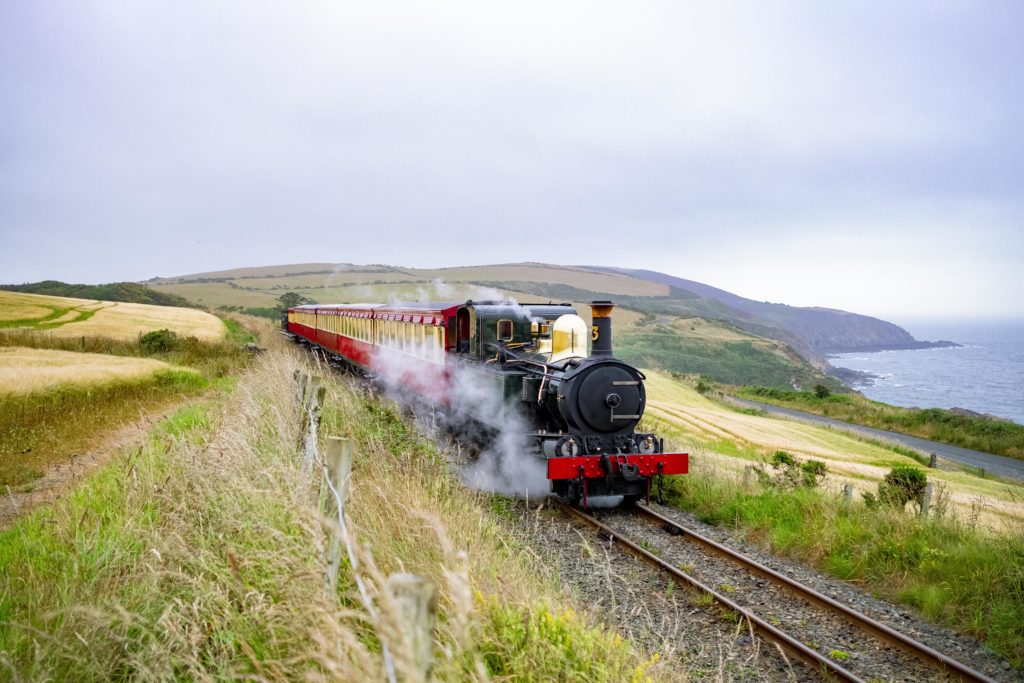 The island's steam train is a popular travel option
The island's steam train is a popular travel optionAll were enjoyable and offered a unique experience unlike anything we have back home, but the Snaefell Mountain Railway, which brings you right to highest point of the island, was my clear favourite.
This quaint railway is five miles long, has been in operation since 1895, and is the only electric mountain railway to be found across Britain and Ireland.
We boarded at the pretty Laxey village and enjoyed the gentle 30-minute ride right up to the top of the mountain.
Once we reached the peak – which puts you 2,036 feet above sea level – you are rewarded with an awesome panorama that stretches as far as the eye can see.
The Manx saying goes that from the top of Snaefell Mountain, you can see some, or all, of the Seven Kingdoms – that is England, Ireland, Scotland, Wales, the Isle of Man and the kingdoms of heaven and the sea.
What more can you ask from a train ride, really?
 Reach new heights on the Snaefell Mountain Railway
Reach new heights on the Snaefell Mountain RailwayThere are other modes of transport too, that are also worth pursuing.
We decided to explore the stunning Little London hills at Cronk -y -Voddy on horseback.
Led by the excellent team at Ballahimmin Riding and Pony Trekking Centre, this two-hour session took us on an exciting adventure through parts of the Manx countryside which are simply inaccessible by car – or railway.
Safely mounted on our trusty steeds our leisurely trek, which included some trotting too as our confidence improved, made for a fabulous family activity.
It was another experience spent flanked by the island’s consistently stunning views, whilst soaking up the simple pleasures of the outdoors.
That proved a recurring theme during our time on the island, which may have been short but was undeniably action-packed.
We left the Isle of Man with a clutch of great memories and a new-found affection for this small island which has a huge heart.
And there is no doubt in my mind that we will be back for another slice of island life soon.
Top spots to visit on the Isle of Man:
Laxey
 Visit the famous Laxey Wheel
Visit the famous Laxey WheelLaxey is a must-visit spot on the Isle of Man.
This pretty village on the east coast of the island, is famous for the Laxey Wheel - the world’s largest working waterwheel - and its rich mining heritage.
You can actually visit the mine and climb the wheel, we did both and would highly recommend.
There is also a gorgeous beach, with an inviting café (The Shed) that offers plenty of treats to keep customers of all ages happy.
You also board the Snaefell Mountain Railway in Laxey, which is another activity not to be missed.
Port Erin
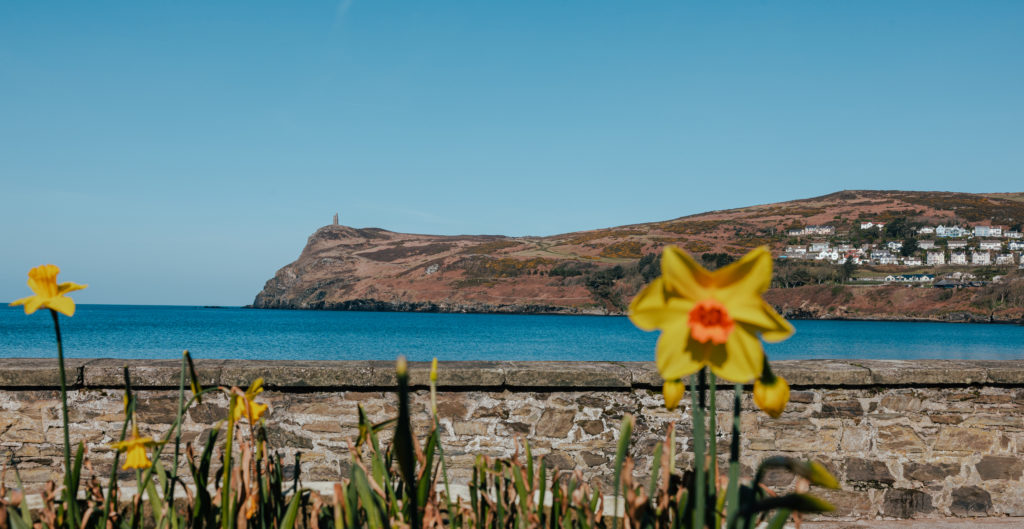 Chilled seaside vibes at Port Erin
Chilled seaside vibes at Port ErinFor a more chilled seaside vibe then head for Port Erin.
Located in the south of the island, it boasts a stunning sandy beach, flanked by dramatic cliffs, and an uber-relaxed atmosphere.
Whether you fancy indulging in some water sports or simply taking position on the sand for some people-watching you will not be disappointed.
Finish your day off with dinner at Byron’s. This pizza restaurant offers delicious food, fabulous cocktails and awesome views of the beach.
Castletown
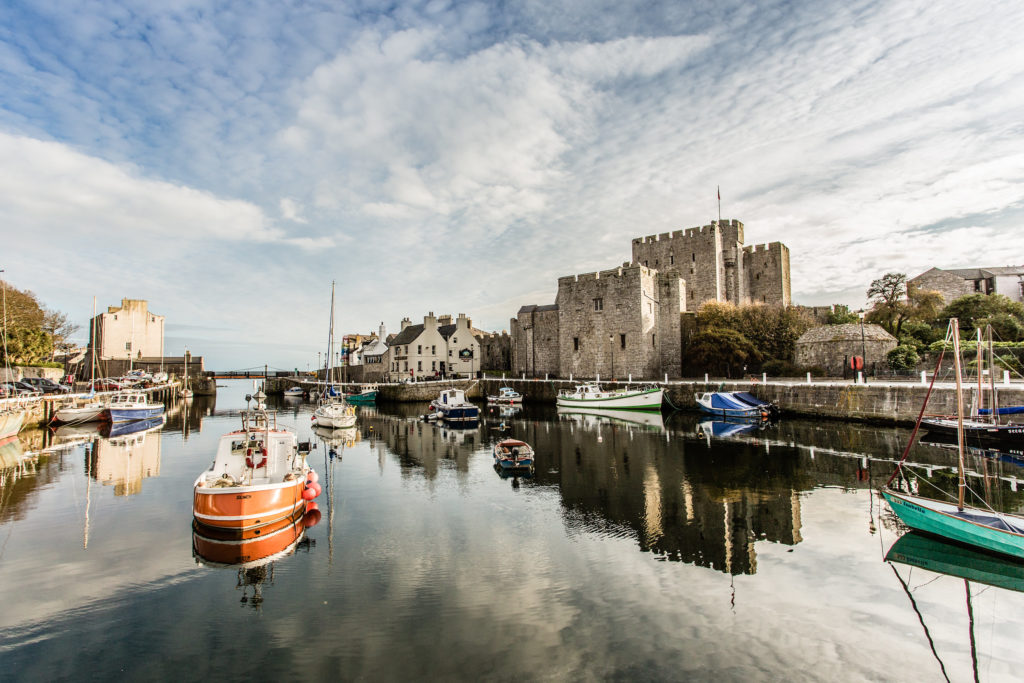 Indulge your inner history buff at Castletown
Indulge your inner history buff at CastletownIndulge your inner history buff at Castletown.
As the ancient capital of the island, this town is made up of small winding streets and quaint fishing cottages which are dotted along the harbour leading to a Viking castle that towers over it all.
This medieval castle is open to the public, so you can explore its rooms and climb right up to the top for one of the best views of the island.
Peel
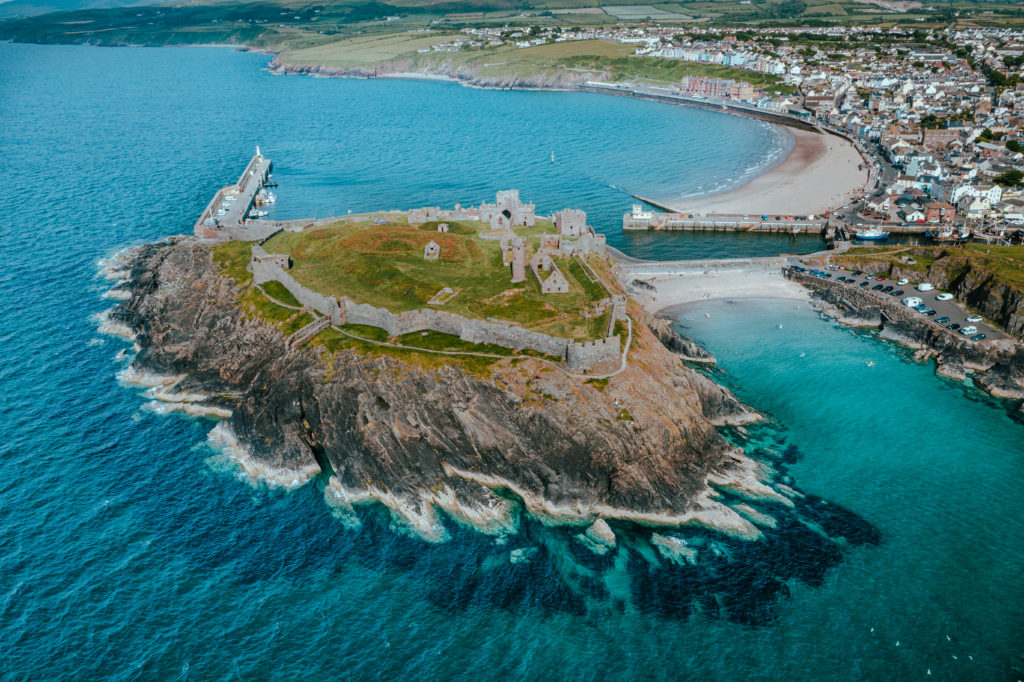 The dramatic coastline at Peel
The dramatic coastline at PeelThere is a healthy dose of local heritage to be had in the picturesque town of Peel on the west coast of the island.
This historic fishing port, which locals call the Sunset City, is known for its striking red sandstone castle, golden beach, and vibrant sunset views.
You can also get a delicious plate of ‘Queenies’ the queen scallops fished from Manx waters which are a local seafood delicacy.
Douglas
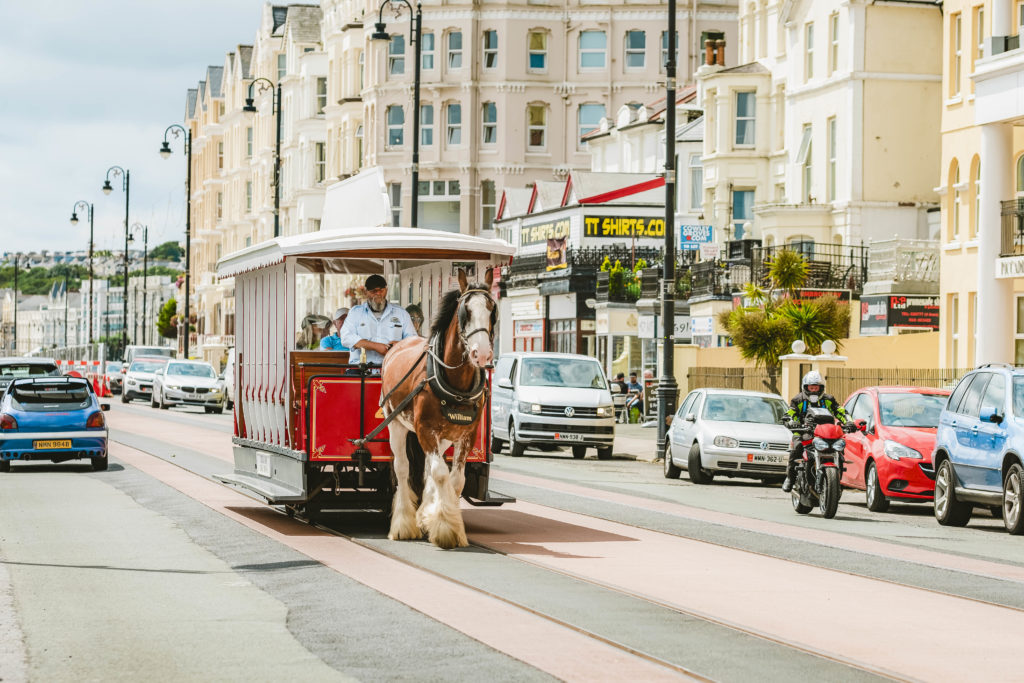 The historic horse-drawn tram is still in operation in Douglas
The historic horse-drawn tram is still in operation in DouglasThe capital of the Isle of Man is Douglas, a vibrant seaside city with a lengthy bay and a pleasing Victorian promenade.
Do not miss the opportunity to enjoy a ride on their historic horse-drawn trams here.
There are plenty shops, museums and restaurants here too.
Where to stay:
We stayed at Moaney Woods Farm Cottage in Laxey which is an excellent spot, and the perfect base from which to explore the island.
Visit Island Escapes for bookings and other accommodation options on the island.
Getting there:
Steam Packet operates daily sailings from England and Ireland to the Isle of Man. Visit the Steam Packet Company for bookings and information.
Further information:
Click here for further ideas and inspiration for your visit to the Isle of Man

